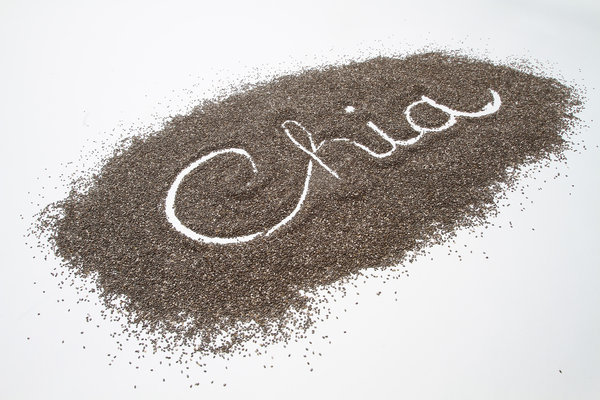Chia seeds are native to South America and have been a staple in Mayan and Aztec diets for centuries. Today, they draw the interest of many people for their health benefits and uses in cooking. It turns out the South American staple is a rich source of nutrients and antioxidants.It contains calcium, manganese, and phosphorus, and is a great source of healthy omega-3 fats. As an added benefit, chia seeds can be eaten whole or milled, while flax seeds have to be ground before consumption in order to access their health benefits for example. When buying, both white and black are good, but red are immature and black that are smaller than regular are not good!

Omega-3 Fatty Acids
Chia seeds are rich in polyunsaturated fats, especially omega-3 fatty acids. Chia seeds’ lipid profile is composed of 60 percent omega-3s, making them one of the richest plant-based sources of these fatty acids — specifically, of alpha-linolenic acid, or ALA. The omega-3s in chia seeds can help reduce inflammation, enhance cognitive performance and reduce high cholesterol.
Fiber
Fiber is associated with reducing inflammation, lowering cholesterol and regulating bowel function. Chia seeds are an excellent source of fiber, with a whopping 10 grams in only 2 tablespoons. That is one-third of the daily recommended intake of fiber per day.
Antioxidants
Chia seeds are rich in antioxidants that help protect the body from free radicals, aging and cancer. The high antioxidant profile also helps them have a long shelf life. They last almost two years without refrigeration.
Minerals
Two tablespoons of chia seeds contain 18 percent of the DRI for calcium, 35 percent for phosphorus, 24 percent for magnesium and about 50 percent for manganese. These nutrients help you prevent hypertension and maintain a healthy weight, and are important for energy metabolism and a part of DNA synthesis.
Satiety
Satiety is the feeling of being full and satisfied, which helps lower food cravings between meals. The combination of protein, fiber and the gelling action of chia seeds when mixed with liquids all contribute to their satiating effects.
Gluten-Free
Chia seeds contain no gluten or grains. Therefore, all of the nutritional benefits of chia seeds can be obtained on a gluten-free diet.
Egg Replacer
The outer layer of chia seeds swells when mixed with liquids to form a gel. This can used in place of eggs to lower cholesterol and increase the nutrient content of foods and baked goods. To make the egg replacement, mix 1 tablespoon of chia seeds with 3 tablespoons of water and let sit for 15 minutes.
Can Be Digested Whole
Unlike flaxseeds, which are also high in omega-3 fatty acids, fiber and minerals, chia seeds do not need to be ground in order to obtain their nutrient or egg- replacement benefits.
Dyslipidemia
A study published in the “British Journal of Nutrition” showed that chia seeds as a dietary fat source can lower triglycerides and cholesterol levels while increasing HDL or “good” cholesterol. The study also found that when substituting chia seeds for other fat sources, such as corn oil, the ALA was able to prevent high triglyceride levels and reduce central obesity.
Blood Sugar Regulation
Chia seeds can play an important role in regulating insulin levels. They can reduce insulin resistance and decrease abnormally high levels of insulin in the blood.
They can be sprinkled whole on top of salads or toast or added milled to smoothies, and some on ice-cream, They are flavorless so they will not change the flavor of what ever you add them to! “Add them to anything and everything”
All of these amazing benefits in one little seed! Add these benefits to the AMAZING dense dose of nutrition, shakeology, and see your health SKY ROCKET!
[button link=”Myshakeology.com/nikkikminton” type=”big” color=”green”] Read More Here[/button]





